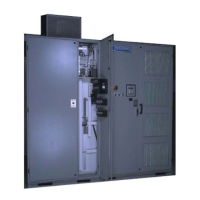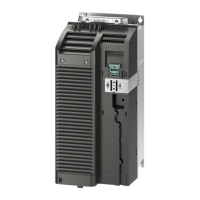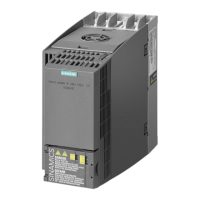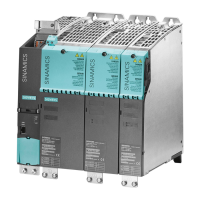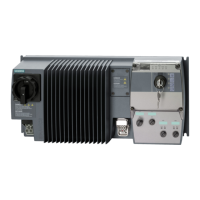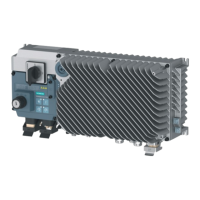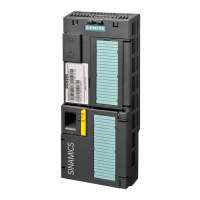Drive output rebalanced by bypassing functional cells (not using neutral shift)
One solution is to bypass an equal number of cells in all three phases, even though some may
not have failed. This method prevents imbalance but sacrices voltage capability. The example
below shows a 15 cell drive after bypass of two cells in all phases to restore balance. 87% of the
cells are functional but only 60% are in use, and only 60% of full voltage is available.
&
%
$
9%$
9$&
9&%
$
$
$
&%
1
&
%
&
%
r
7<3
Figure 7-5 Drive Output rebalanced by bypassing functional cells
Drive output re-balanced by adjusting phase angles (neutral shift)
A better approach is using neutral shift. This method takes advantage of the fact that the star-
point of the cells is oating, and is not connected to the neutral of the motor.
Neutral shift:
• shifts the star-point of cells away from the motor neutral
• adjusts the phase angles of the cell voltages
• helps to obtain a balanced set of motor voltages even though the cell group voltages are not
balanced.
This approach is equivalent to introducing a zero-sequence component into the voltage
command vectors for the cells.
The example shows a 15 cell drive after bypass of two cells in phase A only. Neutral shift adjusts
the phase angles of the cell voltages so that phase A is displaced from phase B and from phase
C by 132.5°, instead of the normal 120°. 87% of the functional cells are in use, and 80% of full
voltage is available.
Operating the Control
7.4 Cell Bypass
NXGPro+ Control Manual
Operating Manual, A5E50491925A 187
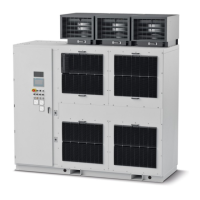
